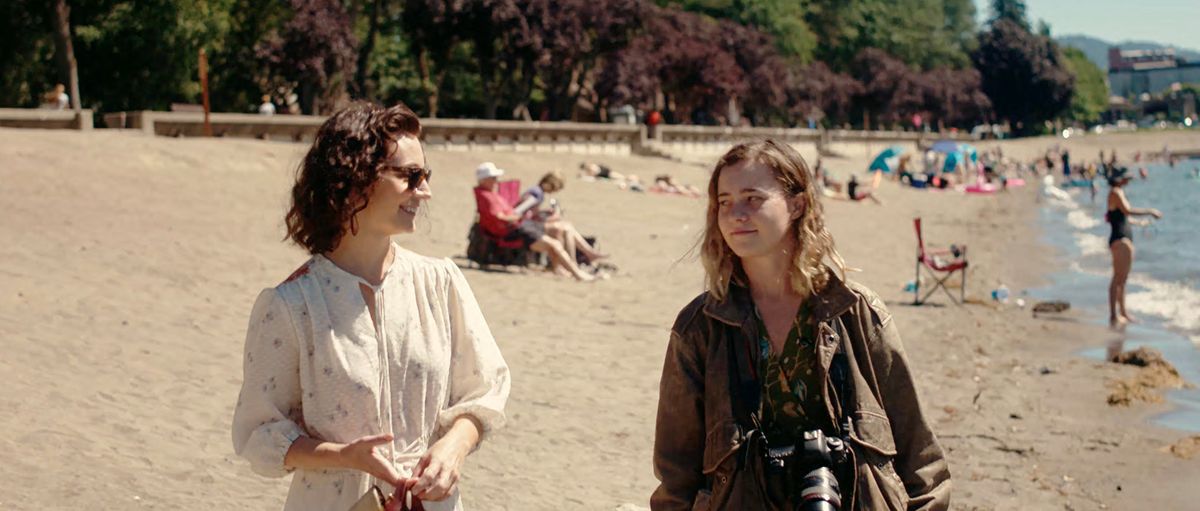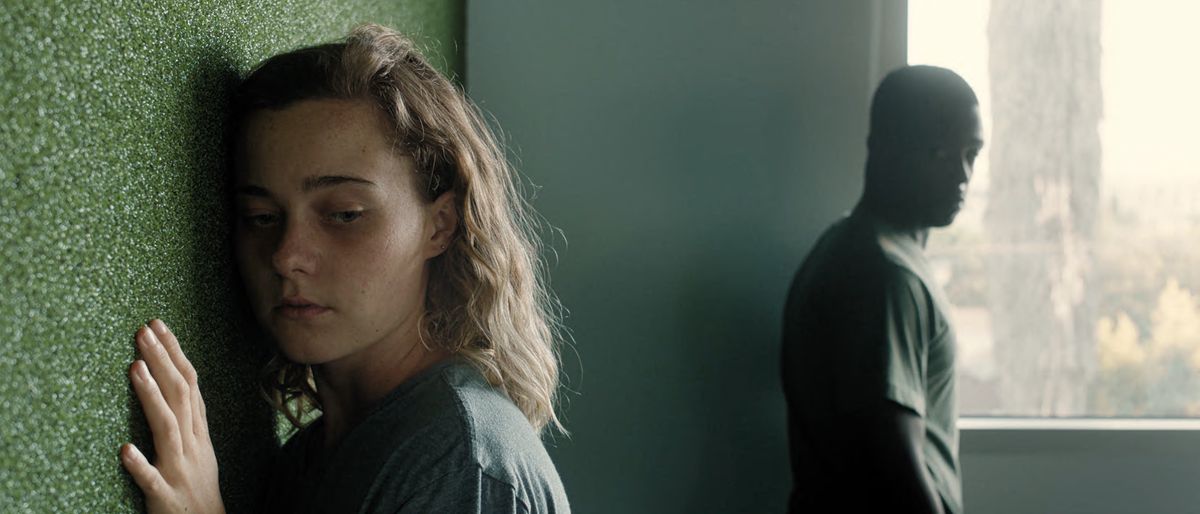Family drama ‘Good Side of Bad,’ filmed in Spokane and Coeur d’Alene, hits streaming services
Jules Bruff, as Sara, and Lexi Simonsen, as Florence, in “Good Side of Bad.” The actors are seen here on the beach at Coeur d’Alene City Park. (Courtesy of Bill Vergos)
Spokane, and the Inland Northwest, has had its fair share of screen time over the years. In 1985, there was the Matthew Modine-led “Vision Quest,” and in 1993, there was “Benny and Joon,” starring Johnny Depp and Mary Stuart Masterson.
“Smoke Signals,” based on Sherman Alexie’s “The Lone Ranger and Tonto Fistfight in Heaven,” was released in 1998, with “At Middleton,” which featured scenes filmed at Gonzaga University and Washington State University, following in 2013. The next year, Spokane shined on the small screen, as well, thanks to “Z Nation.”
More recently, 2022 saw the release of “Dreamin’ Wild,” about musical brothers Donnie and Joe Emerson. Now, the newest addition to the Spokane cinematic universe is “Good Side of Bad,” a film by director/writer/producer Alethea Root, writer/producer/actor Jules Bruff and writer Ciera Danielle.
In “Good Side of Bad,” which is based on the novel of the same name by Beverly Olevin, a young photographer named Florence (Lexi Simonsen) reunites with her siblings (Bruff) and Peter (Alex Quijano) after she suffers a severe mental break.
Florence works to get back on track, but a schizophrenia diagnosis forces the siblings to consider scary potential realities in Florence’s future.
“Good Side of Bad” also stars Myles Grier as Dennis, Emmy winner Kim Estes as Dr. Richardson and Oscar-nominated Tess Harper as Mary Ellen. The movie also features Mildred Langford as Nurse Beverly and Sadie Stratton as Principal Berg.
Bruff, who was working with Olevin at the time, introduced Root to “Good Side of Bad.” Root was immediately taken with the characters and the shared but different experience each sibling had with Florence’s diagnosis.
“I love a story that takes one thing that everyone has an opinion about or feeling about and exposes how we’re all having different feelings about the same thing and how we see things differently,” Root said. “This moment is the same moment, but we all see it through our own lens.”
Root and Bruff both have personal experience with people diagnosed with schizophrenia, and Root also interviewed friends and family members of people with schizophrenia in preparation. She found that anytime she mentioned she was making this movie, people would come out of the woodwork with stories about their experiences related to schizophrenia.
Root said those chats turned into informational conversations that helped guide her writing and directing. The actors, too, did their own research, and Root and the cast had conversations about how someone with schizophrenia might come across. There are moments when Florence seems hard-headed, for example, because she is convinced that what she saw and experienced really happened.
“When someone is so convinced in their conviction of something, that can come off one way …” Root said. “But it’s self preservation, or it’s having a different understanding of what’s happening in the world.”
Though the novel bounces between New York and Seattle, Root decided to film in Spokane and Coeur d’Alene because, simply, doors kept opening for the “Good Side of Bad” team in the Inland Northwest.
“Spokane came on our radar through how everything with independent film comes along, through love and offerings,” Root said.
Producer Katie Von Till’s sister and nieces live in Coeur d’Alene and allowed the team to stay at their home and film at their restaurant. Root then found an Airbnb listing in Spokane that fit her vision for the family home and received permission from the home owners to film there.
Von Till’s nieces helped with location scouting, as did a friend of Root’s who lives in Spokane, which led to scenes being filmed in front of a community college, along the Centennial Trail and at Lake Coeur d’Alene, among other places around town.
In the trailer, there is also a sweeping aerial shot of downtown Spokane, including the Washington Water Power building, the Howard Street Bridge and the Spokane County Courthouse.
Three local actors auditioned and received roles in the film while also working as production assistants, and the crew rented equipment from local production companies. Filming during the COVID-19 pandemic made for an interesting experience, but Root said the cast and crew were vigilant about following guidelines and no one in the production got sick.
The team filmed for about two weeks in Spokane before later doing a few re shoots in Los Angeles.
Since its completion, “Good Side of Bad” has been honored at festivals like the Festival of Cinema NYC (audience award), the Block Island Film Festival (best picture, director, actress and screenplay), the Awareness Film Festival (grand jury award) and the Albuquerque Film and Music Experience (best director and first runner up – narrative feature).
Those achievements are nice, of course, but Root said comments from those with schizophrenia, like speaker and influencer Michelle Hammer, who saw the film at a screening in New York City and said “Good Side of Bad” was the first film she had seen to respect the illness, are even more rewarding.
Root said she and Bruff wanted to make a film that was as honest as possible about the experience of schizophrenia, not one that exploited the illness for entertainment value.
“Part of our mission is to end the stigma and to have honest conversations and to demystify and to show that people who have schizophrenia don’t need to be feared or scared,” she said. “There is a path forward. You’ll always have it, but if you can understand better, then you can be in a place of healing versus fear.”




